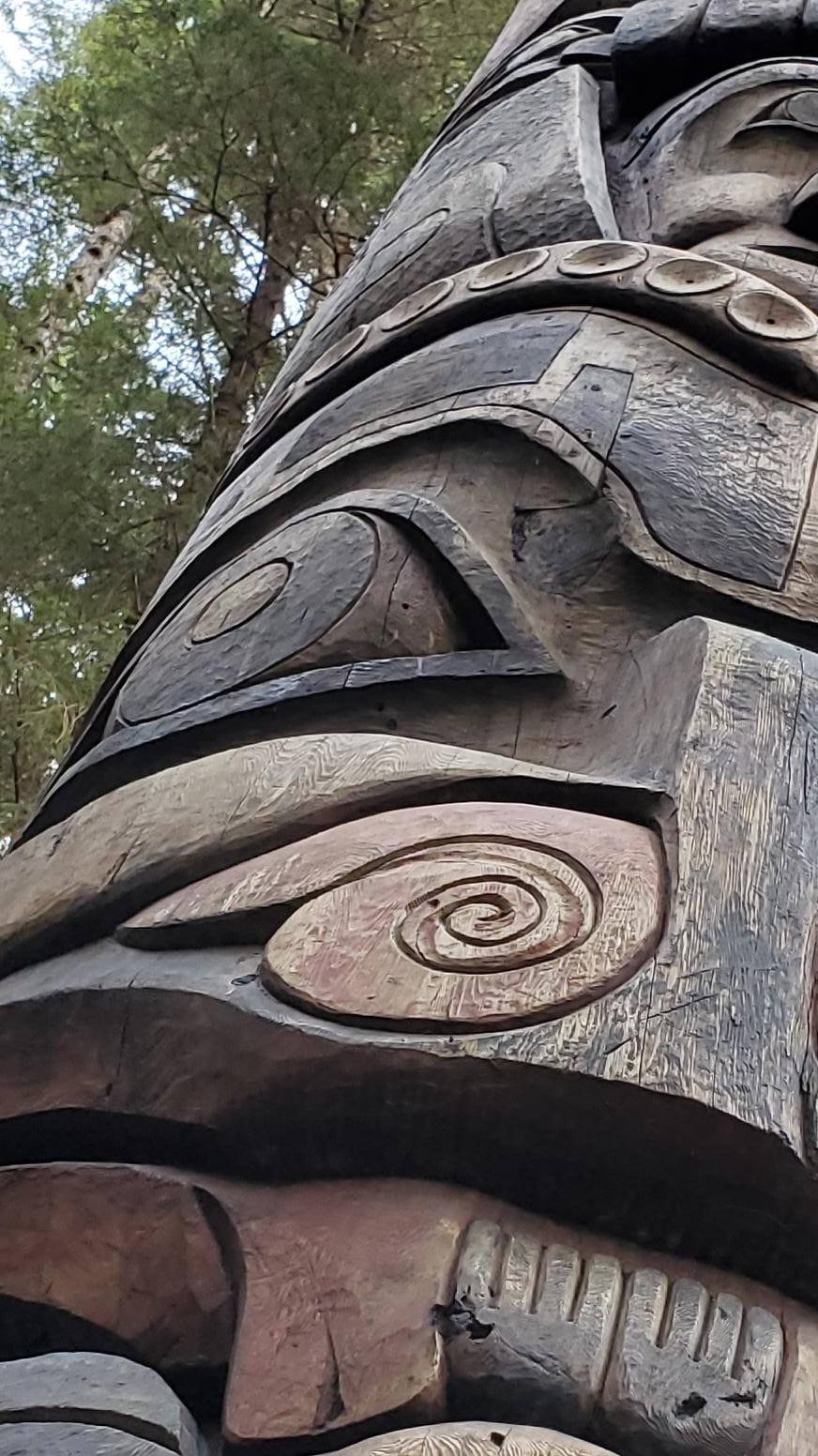Last updated: June 26, 2025
Place
Mosquito Legend Pole

NPS/Cinnamon Dockham
Wheelchair Accessible
This pole is from the Kagani Haida village of Sukkwan, which is on the southern border of traditional Tlingit territory. The pole was provided by Hattie Wallace of Klinkwan to John Brady in 1903.
After arriving in Sitka, the pole was brought to the 1904 Louisiana Purchase Exposition in St. Louis, MO and the 1905 Lewis and Clark Exposition in Portland, OR. After a replacement pole was recarved by Frank Kitka (Ganóosgu éesh the CCC between 1938-1941, it was loaned to the US Naval Air Station on Japonski Island across from Sitka, who turned the pole over to Mt. Edgecumbe High School, a boarding high school run by the Bureau of Indian Affairs who took over the military facilities after WWII. One of the few originally loaned to the US Navy, it was the only intact pole when, in 1961, it was arranged for its indefinite loan to the Sheldon Jackson Museum in Sitka. It remained there until 1983 when it returned to the Sitka National Historical Park. The original pole obtained from Sukkwan can be seen in the totem preservation exhibit, on the outside of the Visitor Center.
This pole is 33 feet tall, three and a half feet wide and 2 feet thick. It is painted with traditional red, black and bluegreen colors. Interestingly, this pole blends Haida carving style with Tlingit stories.
- The large figure at the base is probably a devilfish or octopus recognized as a bear. Notice the suction cups used as eyebrows.
- Above that is a female bear holding the hunter who was lost in the woods and he became her husband;
- Guteel, a Tlingit figure associated with the creature from which mosquitoes originated is the second figure from the top of this pole.
- The pole is topped by a village watchman.
The original of this pole may be viewed in the Totem Preservation Exhibit located outside the visitor center at the north end.
